Heian Shrine with only 126 years of history is relatively new compared to other shrines. Highlights of the shrine include a vermilion torii, a traditional Japanese garden, and a replica of the old Imperial Palace. It is an impressive religious complex made even more so by its natural surroundings.
Table of Contents
Introduction to Heian Shrine
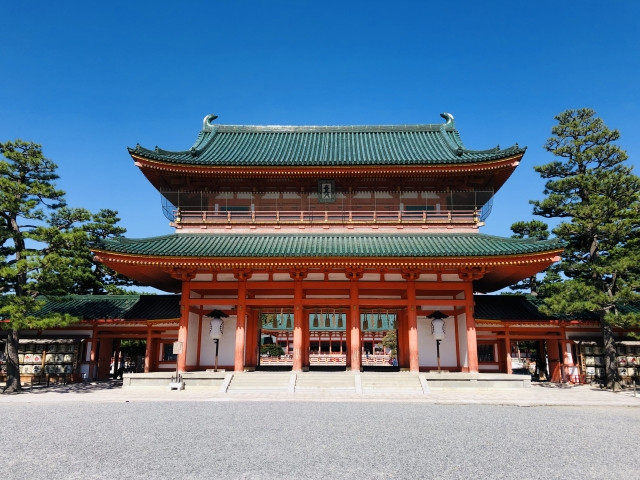
History
To understand the significance of Heian Shrine requires us to look back at Kyoto’s history. For 391 years spanning 795 to 1185, Kyoto went by the name of Heian-Kyo. In addition, Heian-Kyo was the capital of Japan during this time which became known as the Heian Period. The Kanji that makes up Heian-Kyo are 平安 (peace) and 京 (capital), so bringing them together you’ll get the “Capital of Peace”.
The Heian Shrine 平安神宮 was established in 1895 in remembrance of this important period in Japan’s history. That year was also the 1,100th year anniversary of the old capital’s inauguration in 795. At this time, the era’s first emperor, Emperor Kanmu, was enshrined as the shrine’s deity. 45 years later in 1940, the last emperor, Emperor Komei also became enshrined at the shrine.
※ Heian Jingu, "About Heian Shrine"
Importance of Heian Shrine
Things were not going well for Kyoto in the late 19th century after the move from Kyoto to Tokyo as the capital of Japan. The people of Kyoto saw a great opportunity to improve their situation when Kyoto was picked as the host of the Fourth National Industrial Exhibition. This event was a project by the Government to showcase technological advancements by local Japanese and foreigners alike.
The event was originally planned to be held in 1894 but was postponed to 1985 to coincide with the 1,100th anniversary of Heian-Kyo as strongly requested by the locals. The Heian Shrine played a major role as the host venue for the event.
With more than a million visitors and over 70,000 exhibitors, the exhibition was an overwhelming success. The exhibition and also the Shrine greatly contributed to the recovery of Kyoto as a tourist spot and supplied guests and customers to many services in Kyoto. The Heian Shrine became a witness and symbol to Kyoto’s revitalization.
※ National Diet Library, "Fourth National Industrial Exhibition"
Shrine's Structure
Many of Heian Shrine’s structures are based on the design of Heian-Kyo’s Imperial Palace’s State Hall (Chodo-in). Construction was considerably difficult considering the old palace had been burnt down in 1227 and there were only few surviving documents showing how it looked. The shrine was also not built in the palace’s original location due to difficulties obtaining the land. Instead, the shrine now stands in the Okazaki area.
The shrine complex has an extensive courtyard with white sand covering the grounds. All the buildings inside are designed with striking jade roofs, white walls, and vermillion paint in a Chinese-style.
There is also the Shin'en Garden that takes up half of the entire shrine complex. This huge garden consists of 4 gardens, each in its own style and representative of a period in Japanese history.
※ Heian Jingu, "About Heian Shrine" ※ Google Books - Shinto Shrines: A Guide to the Sacred Sites of Japan’s Ancient Religion, "Heian Jingu," p.104-105
Writer's Pick
Significant Highlights
There are a lot of things to check out inside the Heian Shrine and here is a list of things you shouldn't miss:
Torii
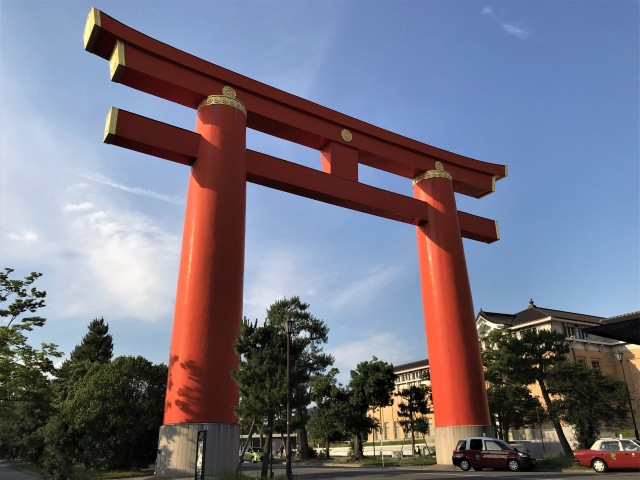
The vermilion Torii gate is hard to miss as it stands 80 feet tall. It is also the tallest torii in Kyoto. Its legs alone are about 11.8 feet diameters thick! The Torii gate is one of the most popular photo spots in Heian Shrine. On a sunny clear day, its bright red stands out against the blue of the sky.
※ Google Books - Shinto Shrines: A Guide to the Sacred Sites of Japan’s Ancient Religion, "Heian Jingu," p.104-105
Chinese Four Mythical Beasts
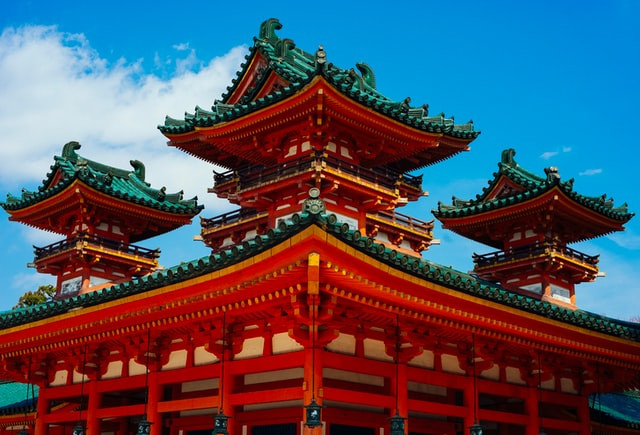
The four mythical beasts are guardians to the auspicious directions. They are Genbu of the North, Suzaku of the South, Byakko of the West, and Seiryuu of the East. The purification fountains for Chozu (self-cleansing) are decorated with stone statues of two of these mythical beasts, namely the White Tiger Byakko and Blue Dragon Seiryuu.
There are also two towers in the courtyard that are named after the mythical beasts.
Daigoku-den

Heian Shrine’s main hall resembles the old Imperial Palace. By its front staircase, you can find two trees by its both sides, a cherry blossom tree called Sakon no Sakura and a mandarin tree called Ukon no Tachibana. These trees are a perfect imitation of the former
Sakon no Sakura and Ukon no Tachibana that decorated the old Imperial Palace.
Shin’en Garden
Collectively known as Shin’en Garden are 4 stroll gardens that encompass 33,000 square meters of the shrine complex. The gardens are a designated National Site of Scenic Beauty in a style unique to a period in Japanese history. The renowned landscape artist Ogawa Jihei is responsible for designing the Nishi, Naka, and Minami Gardens.
Higashi Shin'en
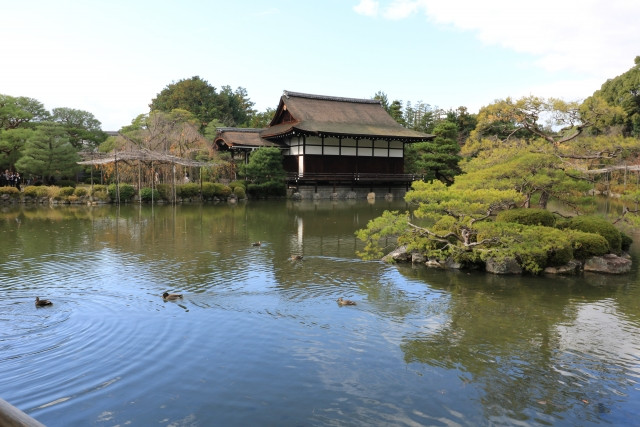
The Eastern Garden has a pond called Seiho-ike and a majestic bridge called Taihei-kaku from the Tensho Period. The bridge features a grand statue of a phoenix and is built in a distinct Chinese style. From this garden, you can get a great view of Mt. Kacho.
Nishi Shin'en
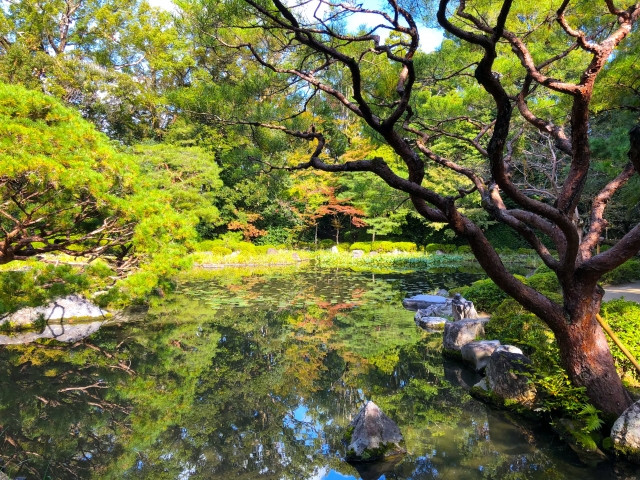
The Western Garden has a pond named Byakko-ike (after the mythical beast). There is also a teahouse called Choushin-tei 澄心亭 where you can experience sado (tea ceremony) with matcha and wagashi.
Naka Shin'en
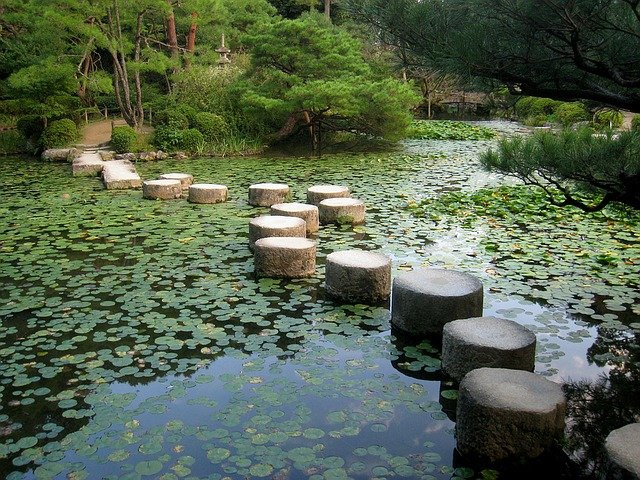
The Middle Garden has a pond named Soryu-ike. The highlight of this garden is the unique winding stone path across the pond called Garyu-kyou. Nearby this garden is a food stall where you can catch a break with tea and snacks.
Minami Shin'en

The Southern Garden is known as the gardens of Heian aristocrats. They would hold garden parties called Kyokusui-no-en here. The highlight of this garden are the magnificent weeping cherry blossom trees. The garden is planted with more than 200 types of plants that were featured in Heian Period literature including Genshi Monogatari and the Tale of the Bamboo Cutter.
Annual Festival in Celebration of Kyoto’s Founding
The extensive courtyard of the Heian Shrine is a popular venue for events like night time outdoor Noh Drama in summer. The most popular annually celebrated Jidai Matsuri 時代祭, or Festival of the Ages, is the shrine’s highlight event of the year.
Jidai Matsuri is one of Kyoto’s Three Great Festivals 京都三大祭. It is held on 22 October every year in celebration of Kyoto having once been the capital of Japan. A parade featuring participants dressed in traditional clothes from different periods in Japanese history or as famous historical figures is the top attraction of the festival. The parade starts at noon from the old Imperial Palace location and leads to the inside of Heian Shrine.
※ Heian Jingu, “平安神宮神苑拝観について” “時代祭”
Access, Hours and Fees
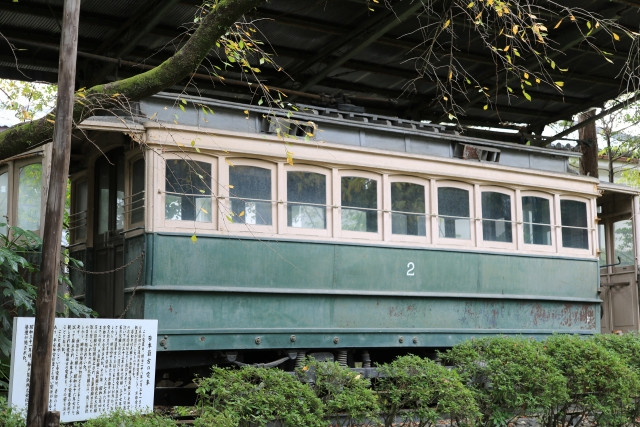
Opening Hours
Heian Shrine
6:00 ~ 17:30
Subject to seasonal changes. Opens overnight on New Year’s Eve.
Shin’en Gardens
Opens at 8:30.
Closes at 17:00 (Nov~Feb), 17:30 (1~14 Mar, Oct), 18:00 (15 Mar~Sept)
※ Heian Jingu, "参拝時間" "平安神宮神苑拝観について"
Entrance Fees
Shin’en Gardens
600 yen (Adult), 300 yen (Child)
Free twice a year on 22 October (Jidai Matsuri) and early June (check website for date)
※ Heian Jingu, "平安神宮神苑拝観について"
Getting to Heian Shrine
From Kyoto Station, take the Kyoto City Bus No.5 to Okazaki Koen Bijutsu-kan Heian Jingu-mae Bus Stop 岡崎公園 美術館・平安神宮前. The fare is 230 yen and takes around 30-mins.
※ Heian Jingu Shrine, "平安神宮へのアクセス"
Takeaway

Heian Shrine is one of the most important symbols of Kyoto. Everything inside the Heian Shrine from its tall Torii gate to its beautiful gardens, all of it is evidence of Heian-kyo's greatness. Today, Heian Shrine still stands strong as proof of Kyoto's rich history and culture.






























